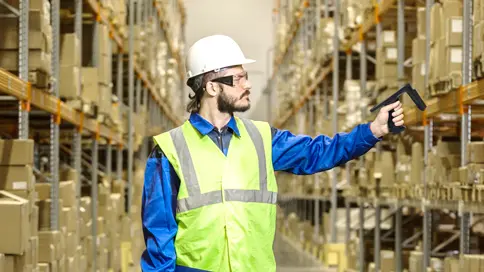Brief Introduction
In recent years, the application of RFID technology in the field of logistics and warehousing management has continued to deepen. As an automatic identification technology, RFID readers communicate with tags through electromagnetic waves and transmit item information to the computer system in real time, effectively improving the efficiency and accuracy of warehouse management.
In recent years, the application of RFID technology in the field of logistics and warehousing management has continued to deepen. As an automatic identification technology, RFID readers communicate with tags through electromagnetic waves and transmit item information to the computer system in real time, effectively improving the efficiency and accuracy of warehouse management. This article will deeply explore the application of RFID readers in manufacturing warehouse management, helping companies understand and make full use of this modern logistics equipment.
1. Goods inbound and outbound management
The RFID reader can quickly and accurately read the item information on the tag, and can track the entry and exit of goods in real time. In the manufacturing warehousing process, companies usually need to manage a large amount of materials, and traditional manual records are prone to errors and delays. Using RFID readers, companies can automate the management of goods entering and exiting the warehouse and improve the efficiency of warehousing operations.2. Inventory management
In manufacturing warehousing management, inventory management is a key link. By attaching RFID tags to items and scanning the tags with an RFID reader, companies can grasp the inventory quantity and location information of materials in real time. This effectively avoids the tediousness and errors of manual inventory and improves the accuracy and efficiency of inventory management.3. Item positioning and tracking
In the manufacturing warehousing process, the positioning and tracking of materials is an important task. With the help of RFID technology, companies can monitor the location information of materials in real time and quickly find the materials they need. Instead of manually searching or relying on manual inventory, RFID readers can accurately locate materials and provide detailed information about their location, greatly improving the efficiency of warehousing operations.4. Prevent theft and loss
Theft and shrinkage are a common problem in manufacturing warehousing environments. Using RFID technology, companies can monitor the flow of materials in real time, detect abnormalities and take corresponding measures in a timely manner. Real-time tracking of items through RFID readers reduces the risk of theft and loss, and improves the safety and accuracy of materials.last
- RFID Implementation Guide for Clothing Retail: Complete Step-by-Step Solution2025-12-19
- SEUIC AUTOID 10 Handheld Terminal: Omnichannel Retail Digital Solution2025-12-19
- SEUIC UF40 RFID Reader: Manufacturing Production Visualization Solution2025-12-18
- Handheld Computer vs Tablet for Inventory Management: A Definitive Guide for Operations Leaders2025-12-18
- SEUIC CRUISE2 5G Handheld Terminal: AI Scanning & 5G Boost Delivery Efficiency2025-12-17
